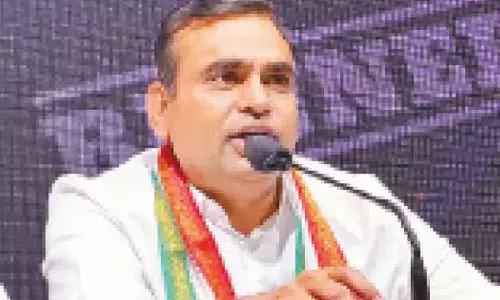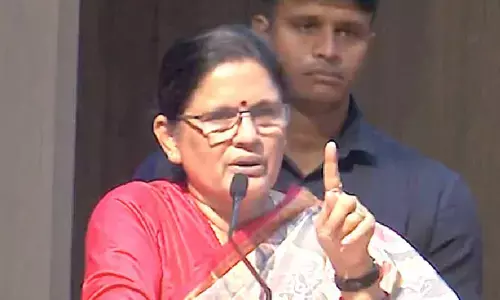Understanding reading comprehension

The Preliminary Examination consists of two papers with objective questions or multiple choice questions. Both papers carry 200 marks each. But Paper I contains 100 questions and Paper II contains 80 questions only. Each paper has to be completed in two hours.
The Preliminary Examination consists of two papers with objective questions or multiple choice questions. Both papers carry 200 marks each. But Paper I contains 100 questions and Paper II contains 80 questions only. Each paper has to be completed in two hours.
In Paper-II of Preliminary Exam, the candidate will have to score a minimum 33% of marks to qualify for Mains (written). This paper verifies aspirant’s proficiency in English language and logic (aptitude).
An important point to be noted is that there is ‘Negative Marking’ in the prelims and 1/3rd of marks allotted for every question is reduced from the score for a wrong answer. So wild guessing is not suggestible, but a ‘big yes’ to intelligent guessing!
As part of guidance to the aspirants, let us discuss about Reading Comprehension.
Reading Comprehension
A major part of paper II, almost 40 to 50 percent, consists of Reading Comprehension passages. We have to prepare for it very well because the number of questions based on RC passages will be around 35.
Reading Comprehension questions measure the aspirant’s ability to read with better understanding. This type of question explores the ability to analyse a written passage from different perspectives:
The ability to recognise explicitly stated elements in the passage.
The ability to understand the assumptions underlying statements or arguments in the passage.
The implications of those statements or arguments.
In CSAT, the examiners don't write the passage on their own, they simply copy it from a newspaper column, articles, books etc. They only frame the questions.
The passages are drawn from a variety of academic disciplines within the humanities, natural sciences, social sciences and literature. Each type of passage needs a slightly different optimum test taking strategy. Civil Services Examination (CSE) will try to minimise the chances of giving someone with previous exposure to a particular topic an unfair advantage over others taking the same version of the test.
Types of passages
a) Passages on sciences: These passages deal with topics including biology, chemistry, and medicine. One should approach them by doing an initial quick reading or skimming of the text. The main aim is to understand how the passage is structured and to analyse its outline.
Passages of this type are often slightly difficult to understand but are also very factual and straightforward. Hence, such passages will likely provide the easiest reading comprehension questions. There will be factual questions and the answers can be seen in the passage in a very straight forward manner.
b) Passages on social sciences: These passages deal with topics such as history, politics, and geography. It can be seen that these passages are quite interesting to read and that is the reason you can have questions based on inferences. Hence, you must read these passages slowly in order to deal with the inferences.
c) Business passages: Business passages involve very difficult structures, and present questions that require you to infer information and even to determine the authors' thoughts and opinions. They need to be read slowly and carefully. Frequently, business passages also include compound words and complex language which we do not use in our day to day conversation. Don't get distracted when you run into such terms. They are not very difficult to decipher if you break them down and examine each of their parts.
Structure of different Questions
Let us look at the structure of the questions.
Factual Questions: These questions are based on the straight facts provided in the passage and can be like:
What are the two methods mentioned by the author for analysis?
Which institute provides the base for research of neurological diseases?
Inference Questions: Inference questions might look like the ones based on the information given in the passage. Some possible questions of this type include:
It can be reasonably inferred that Government is thinking of finalising which of the following proposal?
The author of the passage would be most likely to agree with which of the following statements?
The author of the passage would most likely agree with which of the following statements?
The trick to solve inference questions is to stick closely to the wording of the passage and to keep your logic very clear. Inferences are the statements that must be true based on the facts provided in the passage. These are common questions seen in the examinations where Reading Comprehension has an important role.
Applying Information: These questions are slightly more complex than the previous types. They require you to figure out what the passage states about a particular topic, and then apply that information to answer choices that contain new information. These questions do not appear as frequently as the previous ones. Some possible questions of this type include:
Which of the following situations is most similar to the economic situation described in the second paragraph?
The Policy referred in the paragraph is most likely to suit which sector from the following?
You need to take the same approach to this type of question as you take for inference questions. However it will require an ability of making a larger logical conclusion. These questions test your ability to recognise the structure of an argument or an idea, and then apply the same structure in a different context.
Main Idea Questions: These questions revolve around the basic theme of the passage. You need to understand the idea or concept which the passage speaks about. In most cases, the main idea will be expressed in one or two sentences in the first paragraph. Occasionally it may be expressed in the final paragraph or, rarely, in an interior paragraph.
Sometimes the main idea is never explicitly stated. If you cannot locate a clear theme, it is usually helpful to go through the passage and determine how it gets derived from first paragraph to the final paragraph. Typical main idea questions look like the following:
Which one of the following statements accurately captures the central idea of the passage?
Which would be most appropriate title for the contents of the passage?
Which one of the following most accurately summarises the passage?
The passage can best be described as which of the following?
Main Idea questions are the most common questions on RC passages. Hence it is advisable that you summarise the idea of the passage in your own words, on a scrap paper, while you complete the reading of the passage. Such answers normally contain the central idea but with an additional information.
Supporting Idea Questions: These questions are based on specific concepts or examples provided in the passage and therefore need more detailed understanding of the passage. Typically the questions are as follows:
According to the passage, the author believes in which of the following theories?
According to the passage the current trends of economy can be characterised as....
Which government initiative is most fruitful since last five year’s plan, according to the passage?
Answers to such questions are always the statements in the paragraph. Identify the “keywords” from the question and read the passage around these keywords. For example, the question asks for ‘Current Trends of Economy’, so look for these words in the passage. Usually you will be able to find the statement which says the same thing as that of the choices and the answer will come directly.
Logical Questions: Here you will determine the role of a specific component in the context of entire passage. Typically the question will be as below:
Why author refers to the Supply Chain Theory mentioned in the second paragraph?
Tone Questions: These questions will ask you to draw a conclusion about author’s view or passage, based on the language used in the passage. For example:
What is the author’s view towards current economy?
Which of the following best describes the passage?
Useful steps to crack Reading Comprehension
Read the passage very fast, just skim through it within a short time.
Read the questions with their options.
Go to the relevant section of the passage.
Mark the answer which you think is correct.
Complete all the questions of one passage in one go.
Always mark the answer by using eliminating method, eliminate those options which are least likely to be correct.
It is like an open book test. Take some extra time and try to give the right answer as each question carries two and half marks.
Reading Comprehension questions are not at all like quantitative questions, in which the correctness of the best response can be proved with the help of a mathematical formula. There are no specific rules that can be applicable to comprehension questions. For instance, consider a central-idea question.
A typical second-best answer choice might incorporate the passage's central idea but go further to give a broader approach than the passage itself covers. Hence there is a fundamental difference between the best answer choice and the others.
By:Sree Kumar G




















